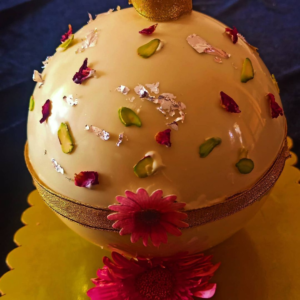Looking for The Origins of Biryani? Biryani is a rice dish from the Indian subcontinent. It’s layered with meat and spices, then cooked in a slow or pressure cooker until it becomes a one-pot meal. It’s often served with raita (yogurt) and naan (bread), but you can also serve it alone.
Biryani has many regional variations based on local ingredients and influences—for example, the type of meat used in each recipe varies widely by region. Some people use chicken biryani as an entrée, while others use mutton biryani as an appetizer or side dish at dinner parties or weddings.


The Origins of Biryani- History
Biryani is a rice dish cooked in a layered manner with meat and vegetables. It originated in Persia, but it was made popular by the Mughals, who ruled India for several centuries (1526 to 1857). The popularity of biryani spread throughout India after that time.
Today, you can find many different types of biryanis depending on where they were adapted from: Hyderabadi biryani uses basmati rice and dum cooking method; Lucknowi biryani uses pilaf style rice; Kolkata biryani uses fried chicken instead of mutton or beef; Sindhi biryani has more gravy than other kinds; etc.
Popular Types of Biryanis
There are several varieties of biryani, each with its own unique flavors and characteristics. The most popular types include:
- Mughlai Biryani: Spicy rice dish from northern India that uses egg to cook the meat in a pot
- Hyderabadi Biryani: Rice dish cooked with spices and then layered with pieces of meat or poultry, garnished with nuts and raisins, and served in a bowl
- Kolkata Biryani: Rice dish cooked with spices and then layered with pieces of meat or poultry, garnished with nuts and raisins, which are mixed together before serving
- Punjabi Biryani: Rice dish cooked with spices and then layered with pieces of meat or poultry; it is sometimes referred to as “Punjab Style” when served at restaurants
How to Cook Biryani in a Rice Cooker – A Quick and Simple Guide
First of all, you need to prepare the ingredients. This involves chopping onions, ginger, and garlic. If you are using chicken or meat, make sure it is cooked and shredded while warm.
Now that everything is done, it’s time to start cooking your biryani! First, add oil or ghee to a deep pan and heat it up on medium flame for 10 minutes until the oil becomes hot enough for frying. Then add spices such as cumin seeds, red chili powder, turmeric powder, and salt if desired (this gives more flavor). After which, you should add finely chopped onions into the pan, followed by ginger paste and garlic paste mixed together with half a cup water
Conclusion
So there you have it, a nice and easy guide to cooking a classic Indian dish. I hope you enjoyed learning about the history of biryani and how to cook it in your rice cooker. If you want more information on this topic, feel free to check out our other blog posts on Indian cuisine!










2 Comments